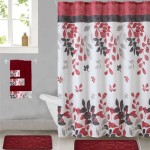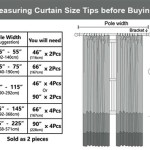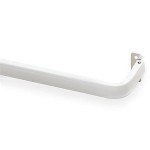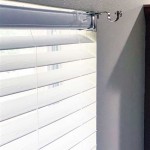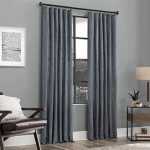Door Curtains For Door Window
Door curtains, specifically those designed for door windows, represent a functional and aesthetic element in interior design. They offer a multitude of benefits, ranging from increased privacy and light control to enhanced thermal insulation and decorative appeal. This article will delve into the various aspects of door curtains for door windows, exploring their diverse types, benefits, selection criteria, and installation considerations.
Types of Door Curtains for Door Windows
The market offers a wide array of door curtains tailored for various door window styles and functional requirements. Understanding the different types is crucial for making an informed purchasing decision.
Panel Curtains: These are simple, rectangular pieces of fabric that hang straight down. They offer ease of use and a clean, minimalist aesthetic. Panel curtains are often suspended from a rod or track and can be stationary or designed to be drawn open and closed. They are suitable for doors with standard-sized windows and can be easily customized with different fabrics, colors, and patterns. The weight and opacity of the fabric will determine the level of light control and privacy provided.
Rod Pocket Curtains: Rod pocket curtains incorporate a sewn-in pocket at the top through which a curtain rod is inserted. This method creates a gathered or ruched appearance, adding a touch of traditional elegance. They are relatively easy to install and remove, making them a practical option for frequently changing décor. The depth of the rod pocket can vary, influencing the amount of gathering and the overall look of the curtain.
Tab Top Curtains: Tab top curtains feature fabric loops or tabs sewn along the top edge that are used to suspend the curtain from a rod. This design creates a casual, relaxed look with visible hardware. The spacing and size of the tabs can affect the way the curtain drapes and the amount of light that filters through. These curtains are often chosen for their decorative appeal and ease of installation.
Grommet Curtains: Grommet curtains utilize metal or plastic rings (grommets) that are inserted into the fabric along the top edge. The grommets allow the curtain to slide smoothly along a curtain rod. This style offers a clean, modern aesthetic and ensures even pleating. Grommet curtains are available in a variety of colors and finishes to complement different hardware styles. The diameter of the grommets should be compatible with the thickness of the curtain rod.
French Door Curtains: Specifically designed for French doors, these curtains typically come in two panels – one for each door. They can be secured at the top and bottom to prevent flapping and to maintain a clean, streamlined appearance. French door curtains often feature tiebacks or magnetic closures to hold them open when desired. The design considerations for French door curtains prioritize functionality and aesthetics, ensuring they complement the style of the doors.
Roman Shades: While technically shades, Roman shades can also function as door coverings. They are made of fabric that folds up in horizontal pleats when raised and hangs flat when lowered. Roman shades offer a clean, tailored look and can be customized with different fabrics and linings. They provide excellent light control and privacy and are particularly suitable for doors with limited space.
Cellular Shades (Honeycomb Shades): These shades feature a honeycomb-like construction that traps air, providing superior insulation. They are lightweight and offer excellent energy efficiency. Cellular shades are available in various cell sizes and opacities, allowing for customized light control and privacy. They are often used on doors to help regulate temperature and reduce energy costs.
Vertical Blinds: Vertical blinds consist of vertical slats that can be rotated to control light and privacy. They are a practical option for sliding glass doors and large door windows. Vertical blinds are durable and easy to clean, making them suitable for high-traffic areas. They can be made from various materials, including fabric, vinyl, and wood, offering a range of aesthetic options.
Benefits of Using Door Curtains for Door Windows
Door curtains offer a range of benefits that enhance the functionality and comfort of a living space. These advantages extend beyond mere aesthetics, impacting energy efficiency, privacy, and overall ambiance.
Privacy: One of the primary benefits of door curtains is the enhanced privacy they provide. Depending on the fabric's opacity, curtains can effectively block unwanted views from the outside, ensuring a sense of security and seclusion. This is particularly important for doors that face busy streets or neighboring properties. Selecting a heavier, lined fabric will maximize privacy.
Light Control: Door curtains offer precise control over the amount of light entering a room. Sheer curtains can filter sunlight, creating a soft, diffused glow, while blackout curtains can completely block out light, ideal for bedrooms or media rooms. The ability to adjust light levels can significantly impact the comfort and usability of a space. Light control also helps protect furniture and flooring from fading caused by prolonged exposure to sunlight.
Thermal Insulation: Curtains can act as an effective barrier against heat loss in the winter and heat gain in the summer. By trapping a layer of air between the curtain and the window, they help to regulate indoor temperature and reduce energy consumption. Thermal curtains, often made with multiple layers of fabric or a special lining, are particularly effective at insulating doors and windows. This can lead to substantial savings on heating and cooling costs.
Noise Reduction: While not as effective as dedicated soundproofing materials, curtains can help to dampen noise from outside. Heavy, densely woven fabrics are more effective at absorbing sound waves than lighter materials. This can be particularly beneficial for doors that face noisy streets or in apartments where sound transmission is a concern. The added layer of fabric can create a more peaceful and quiet environment.
Aesthetic Enhancement: Door curtains can significantly enhance the aesthetic appeal of a room. They come in a wide variety of colors, patterns, and textures, allowing for endless design possibilities. Curtains can be used to complement existing décor, add a pop of color, or create a focal point in a room. The choice of fabric, style, and hardware can dramatically impact the overall look and feel of a space.
UV Protection: Prolonged exposure to ultraviolet (UV) rays can damage furniture, flooring, and artwork. Curtains can act as a barrier against UV rays, protecting these items from fading and deterioration. Selecting curtains with a UV-resistant lining can further enhance this protective effect. This is particularly important for rooms that receive a lot of direct sunlight.
Protection from Drafts: In older homes or buildings with poorly sealed doors, drafts can be a significant source of discomfort. Curtains can help to block drafts, creating a more comfortable and energy-efficient environment. Floor-length curtains are particularly effective at sealing off drafts that come from under the door.
Key Considerations When Selecting Door Curtains
Choosing the right door curtains involves careful consideration of several factors, including the door style, desired level of privacy and light control, and overall décor.
Door Style and Size: The type of door, whether it's a standard door, French door, or sliding glass door, will influence the type of curtain that is most suitable. The dimensions of the door window are also crucial for determining the appropriate curtain size. Accurate measurements are essential to ensure a proper fit. Consider the clearance around the door and any hardware that may interfere with the curtain's operation.
Fabric Choice: The fabric of the curtains significantly impacts their functionality and aesthetic appeal. Different fabrics offer varying levels of light control, privacy, and insulation. Linen and cotton are lightweight and breathable, while velvet and heavier fabrics provide greater privacy and insulation. The color and pattern of the fabric should complement the existing décor. Durability and ease of cleaning are also important considerations, especially for high-traffic areas.
Opacity: The opacity of the curtains determines the amount of light that filters through and the level of privacy they provide. Sheer curtains allow light to pass through while offering minimal privacy. Semi-sheer curtains provide a moderate level of light control and privacy. Blackout curtains completely block out light and offer maximum privacy. The desired level of opacity should be based on the specific needs of the room and personal preferences.
Lining: Adding a lining to curtains can enhance their functionality and longevity. Linings can provide additional insulation, block out light, and protect the fabric from fading. Blackout linings are particularly effective for bedrooms or media rooms. Decorative linings can add a touch of elegance and sophistication. The type of lining should be chosen based on the desired benefits and the overall aesthetic.
Hardware: The choice of curtain rod and hardware can significantly impact the overall look and feel of the curtains. The rod should be sturdy enough to support the weight of the curtains. The style and finish of the hardware should complement the décor. Consider the ease of installation and operation when selecting hardware. Different types of hardware, such as rods, tracks, and clips, offer different aesthetic and functional benefits.
Color and Pattern: The color and pattern of the curtains should complement the existing décor and personal preferences. Neutral colors are versatile and can easily blend with different styles. Bold colors and patterns can add a pop of visual interest. Consider the size and scale of the pattern in relation to the size of the room. Smaller patterns are generally more suitable for smaller rooms, while larger patterns can work well in larger spaces.
Style and Design: The style and design of the curtains should complement the overall aesthetic of the room. Simple, minimalist curtains are suitable for modern interiors, while more elaborate designs work well in traditional settings. Consider the pleating style, length, and overall shape of the curtains. The style should be cohesive with other design elements in the room, such as furniture, lighting, and accessories.
Budget: The cost of door curtains can vary widely depending on the fabric, style, and hardware. It is important to establish a budget before starting the shopping process. Consider the long-term benefits of investing in high-quality curtains, such as improved energy efficiency and durability. Compare prices from different retailers to find the best value for the desired features.

Door Curtains For Doorway Privacy Cute Boho Modern Farmhouse Geometric Pattern Cotton Blackout Half Window Bedroom Kitchen Lazada Singapore

20 Window Covering Ideas For Sliding Glass Doors Voila Voile

Olive Green Bouclé Pencil Pleat Super Thermal Eyelet Door Curtains

Blackout Door Curtain Thermal Eyelet Ring Top Panel Drapes Single Solid Curtains
Hijau Curtains Door Window Plain Embossed Adhesive Ash Brown Maroon Green T150 T200 Ee Singapore

The Linen Cotton Curtains For Window Set Of 2 Long Door Sun Light Protection Home Decor Hangs Elegantly With Back Loops 4 5ft X 9 Ft Avocado Green

Creating A Door Curtain Ideas Tips For Your Home

Next Natural Cosy Texture Pencil Pleat Super Thermal Eyelet Door Curtains 117wx213d Adult

Warm Home Designs 2 Sheer French Door Curtains With Tie Backs In 3 Colors
5dd Custom Size 2025 Sheer Curtain For Windows Sliding Door Curtains Living Room Day Window Drapes 刺绣纱
See Also

